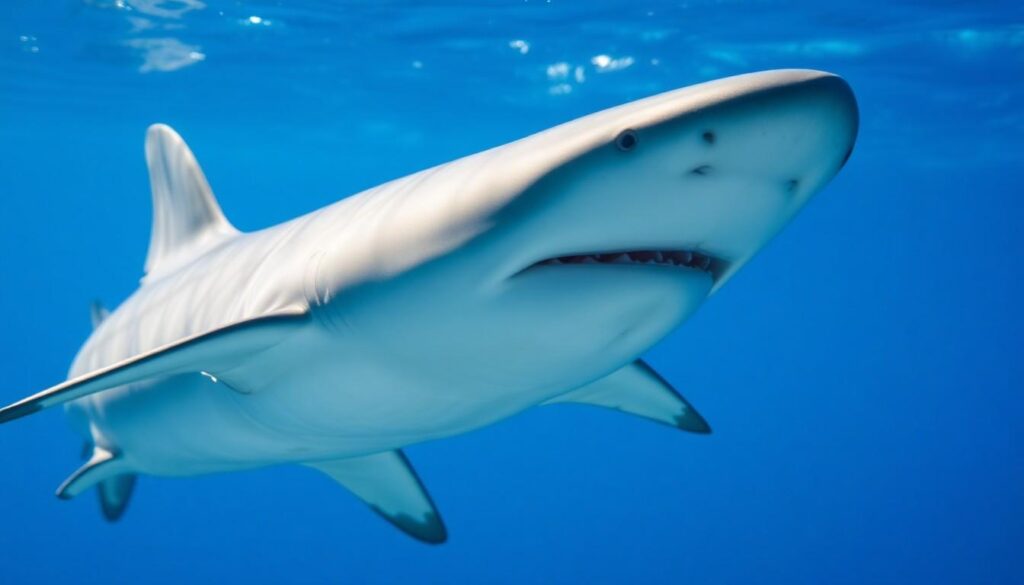When you think of sharks, you might picture their fierce teeth and powerful jaws, but did you know these incredible creatures have no bones at all? Instead of a bony skeleton, sharks are made up of cartilage, the same flexible tissue that makes up human noses and ears. This unique structure gives them remarkable agility and buoyancy in the water.
So, if you’ve ever wondered how many bones sharks have, the answer is simple: zero. Their cartilaginous bodies are a key factor in their evolutionary success, allowing them to thrive in diverse marine environments. Let’s dive deeper into the fascinating world of sharks and explore how their anatomy sets them apart from other fish.
Overview of Shark Anatomy
Sharks possess a distinctive anatomy that sets them apart from most fish. Instead of bones, sharks have a skeleton made entirely of cartilage. This material, lighter and more flexible than bone, allows for enhanced agility and buoyancy, crucial for navigating varied marine environments.
Key Features of Shark Anatomy
| Feature | Description |
|---|---|
| Skeleton | Composed of cartilage rather than bone, providing flexibility. |
| Skin | Covered in dermal denticles, which reduce drag and turbulence in the water. |
| Teeth | Regenerate rapidly; they are not fixed to the jaw but rather embedded in the gums. |
| Fins | Provide stabilization, lift, and propulsion. Each fin type serves specific functions. |
| Gills | Located on the sides of the head; enable effective respiration in water. |
Adaptations and Benefits
Shark anatomy features several adaptations that enhance survival:
- Cartilage: Lightweight and flexible, it decreases overall body density, aiding buoyancy. Cartilage allows for quicker movements compared to bony structures.
- Dermal Denticles: These tiny, tooth-like structures help streamline the shark’s body, minimizing drag. They also serve a protective function, preventing skin irritations and infections.
- Unique Respiratory Systems: Sharks possess multiple gill slits (usually five to seven) that facilitate effective oxygen extraction from water as they swim.
- Efficient Digestive Tract: Sharks have a short but effective digestive system designed to process large meals, optimizing nutrient absorption.
Differences from Other Fish
Sharks contrast sharply with bony fish in several key areas:
- Skeletal Structure: While bony fish have a rigid bone structure, sharks’ cartilage provides a flexible framework.
- Swim Bladder: Unlike many bony fish that use swim bladders for buoyancy, sharks rely on their oil-filled liver. This adaptation provides lift as well as an energy reserve.
- Reproductive Strategies: Some sharks give birth to live young (viviparous) or lay eggs (oviparous), showcasing diverse reproductive strategies that differ from most bony fish.
Understanding shark anatomy reveals how these creatures excel in their aquatic environments, paving the way for ongoing research into their biology and conservation.
Characteristics of Shark Skeletons
Shark skeletons exhibit unique features that differentiate them from those of bony fish. Understanding these characteristics highlights the evolutionary advantages sharks possess.
Cartilage vs. Bone
Sharks lack bones; their skeletons consist entirely of cartilage, a flexible tissue. This adaptation promotes agility and reduces overall weight, enhancing swimming efficiency.
| Characteristic | Sharks (Cartilage) | Bony Fish |
|---|---|---|
| Composition | 100% cartilage | 100% bone |
| Weight | Light and flexible | Heavier |
| Swim Efficiency | High | Moderate to low |
| Damage Recovery | Rapid regeneration | Slower healing |
Flexibility and Strength
Cartilaginous structures grant sharks remarkable flexibility and strength. The flexibility allows for rapid turning and maneuvering, while strength comes from the dense composition of cartilage, enabling sharks to tackle prey effectively.
- Flexible movements enhance predation efficiency.
- Strong skeletal support aids in maintaining body structure during intense swimming.
- Jointed connections allow for a wider range of motion compared to bony skeletons.
These traits have evolved as crucial adaptations, allowing sharks to thrive in diverse marine environments.
Varieties of Sharks
Sharks exhibit immense diversity in their types and adaptations. Understanding these varieties provides insight into their ecological roles and evolutionary traits.
Major Types of Sharks
Sharks can be categorized into different groups based on their features and habitats. Here are some major types:
| Shark Type | Characteristics |
|---|---|
| Great White Shark | Known for its size, powerful bite, and predatory nature. |
| Hammerhead Shark | Distinctive head shape, enhances sensory abilities. |
| Tiger Shark | Recognizable stripes, opportunistic feeder. |
| Bull Shark | Adaptable to freshwater, aggressive behavior. |
| Whale Shark | Largest shark, filter feeder that consumes plankton. |
Bone Structure Differences
Sharks are entirely cartilaginous, unlike bony fish with skeletal structures. Key differences include:
| Aspect | Sharks (Cartilaginous) | Bony Fish |
|---|---|---|
| Skeleton Material | Composed of cartilage | Composed of bone |
| Weight | Lighter, aiding buoyancy | Heavier due to dense bones |
| Flexibility | Highly flexible, enhances movement | Rigid structure, limits movement |
| Damage Recovery | Rapid regeneration | Slower recovery |
These differences underscore the evolutionary advantages of sharks in marine environments, allowing them to thrive as agile predators.
How Many Bones Do Sharks Have?
Sharks possess a cartilaginous skeleton, meaning they do not have bones like traditional fish. This unique structure provides advantages such as increased flexibility and reduced weight.
Common Misconceptions
Many people mistakenly believe sharks have bones. This misconception arises from their sheer size and predatory nature, resembling other fish. However, all shark species share a skeleton made entirely of cartilage. Key points about this misconception include:
- Skeletal Composition: Cartilage differs significantly from bone, being lighter and more flexible.
- Predatory Behavior: Sharks’ predatory efficiency doesn’t rely on bones; their cartilaginous structure contributes to their agility in hunting.
- Evolutionary Advantage: As a result of their unique anatomy, sharks can thrive in various environments unlike bony fish, which have more rigid structures.
Scientific Insights
Research confirms that sharks’ cartilage skeletons confer several evolutionary benefits. Key insights into their anatomy include:
- Weight Reduction: Cartilage is lighter than bone, aiding in buoyancy and improving swim efficiency.
- Regeneration: Cartilage can heal faster than bone, allowing sharks to recover quickly from injuries.
- Diversity of Species: Over 500 species of sharks exhibit this cartilaginous structure, which supports a wide range of adaptations and ecological roles.
| Feature | Shark Skeleton | Bony Fish Skeleton |
|---|---|---|
| Material | Cartilage | Bone |
| Weight | Lighter | Heavier |
| Flexibility | High | Low |
| Regeneration Rate | Faster | Slower |
| Number of Species | 500+ | Numerous |
Understanding the structure and function of shark anatomy promotes insight into their role in marine ecosystems and their successful adaptations across various environments.
Conclusion
Sharks are fascinating creatures that showcase the incredible adaptability of life in the ocean. Their cartilaginous structure not only sets them apart from bony fish but also enhances their agility and efficiency as predators. Understanding their unique anatomy gives you a deeper appreciation for these magnificent animals and their role in marine ecosystems. As you explore the diverse world of sharks, remember that their evolutionary traits have allowed them to thrive for millions of years. This knowledge can inspire a greater commitment to their conservation and the preservation of their habitats.
Frequently Asked Questions
What is the main difference between sharks and bony fish?
Sharks are composed entirely of cartilage, which makes them lighter and more agile than bony fish that have a skeleton made of bones. This difference enhances their buoyancy, flexibility, and overall swimming efficiency, allowing sharks to thrive in various marine environments.
How does shark cartilage benefit their anatomy?
Shark cartilage provides several advantages, including reduced weight and increased flexibility. This structure allows for better buoyancy and maneuverability in the water, contributing to their efficiency as predators and enhancing their survival in diverse habitats.
What are dermal denticles, and what role do they play in shark anatomy?
Dermal denticles are tiny, tooth-like structures covering a shark’s skin, reducing drag and increasing swim efficiency. They improve hydrodynamics, enabling sharks to move faster and with less energy expenditure, which is crucial for their predatory lifestyle.
Why do sharks have multiple gill slits?
Sharks possess multiple gill slits (usually five to seven) to facilitate effective respiration. This anatomical feature allows them to extract oxygen from water efficiently, ensuring they receive adequate oxygen supply while swimming and actively hunting.
How do sharks regenerate their teeth?
Sharks have a unique adaptation where they constantly replace their teeth throughout their lives. As teeth wear down or are lost, new ones grow in the back of their mouths and move forward, ensuring they always have a functional set for feeding.
What are some examples of major shark species?
Major shark species include the Great White Shark, Hammerhead Shark, Tiger Shark, Bull Shark, and Whale Shark. Each of these species displays distinct characteristics and ecological roles, contributing to their unique adaptations and behaviors in marine ecosystems.
What misconceptions exist about sharks?
A common misconception is that sharks have bones. In fact, all shark species are composed entirely of cartilage, which is lighter and more flexible than bone, providing them various evolutionary advantages that enhance their predatory abilities.
How does shark anatomy contribute to their evolutionary success?
Shark anatomy, characterized by cartilage, dermal denticles, and specialized fins, allows for agility, efficiency, and adaptability in their environments. These traits support their survival, enabling them to thrive in diverse marine ecosystems and succeed as top predators.


